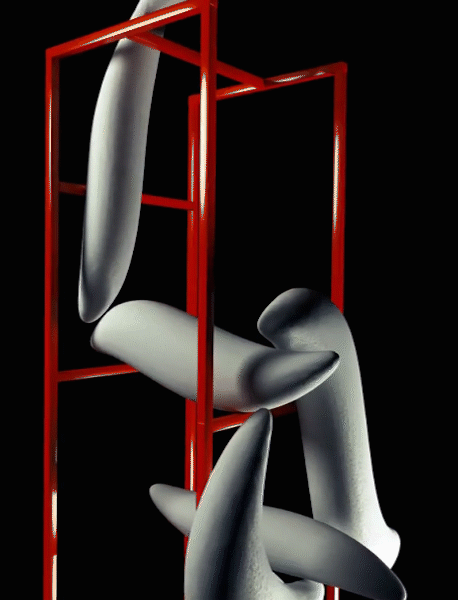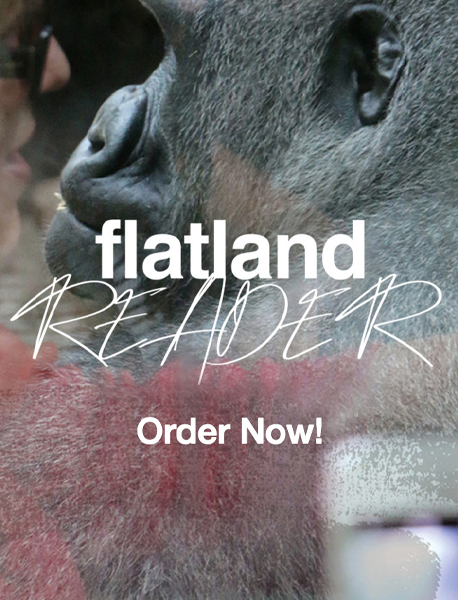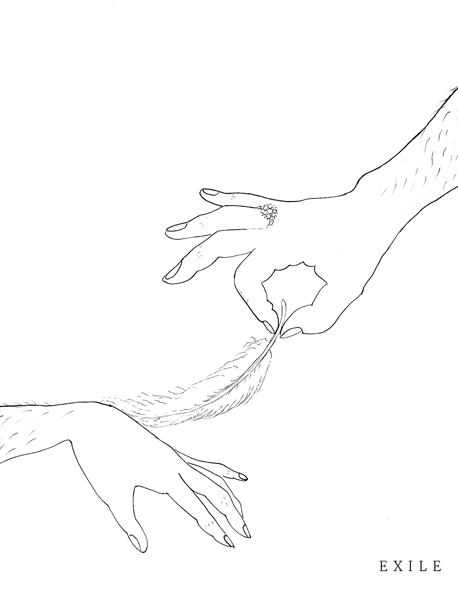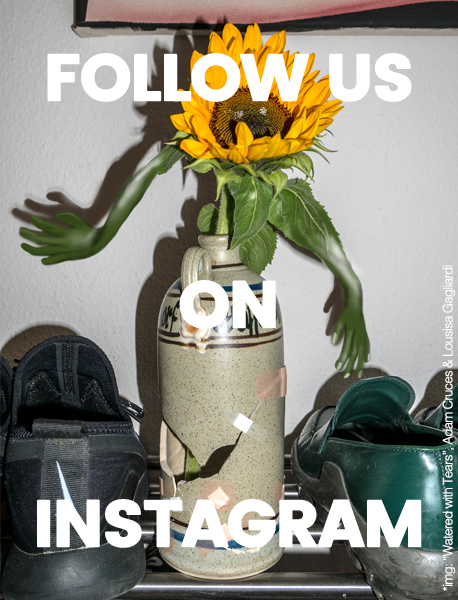OFLUXO
The Room
Aidan Duffy, Carole Ebtinger, Patrick Michael Fitzgerald, Andrew North & Rachel Walters
At South Parade, London, UK
June 24 — July 23, 2022
Photography by Corey Bartle Sanderson
South Parade is pleased to present The Room, a group exhibition featuring work by Aidan Duffy, Carole Ebtinger, Patrick Michael Fitzgerald, Andrew North & Rachel Walters. The exhibition is also accompanied by an essay by Robert Carter (below).
The Lloyd’s building (also known as the Inside-Out Building), located in the City of London, is synonymous with the global insurance industry. Designed by Richard Rogers, The Room, as it is known to its users, has all its services – the heating system, plumbing, lifts, etc – on the exterior in order to maximise the interior space. As a result, it has a disturbing intestinal quality which led to the coining of the term, ‘bowellism’, to describe this style of architecture. The exhibition looks towards this building in both its departure and arrival point, drawing together work that calls to mind the insides or outsides, and what it means for them to be reversed or called into question.
The Room By Robert Carter
Standing on the corner of Leadenhall and Lime Street in the City of London you look up. The surface of the Lloyd’s building is articulated with crisscrossing concrete and vein like pipes dragging your eye towards its towers and reflective surfaces. These elements on the outside inevitably speak of the function of industry, and by extension, what goes on here is specialist, perhaps dangerous and access reserved for those with key cards. What might not be immediately apparent is how you might gain entry. Slung low, at the foot of the building just below ground are some modest revolving doors, the condition of entry being a flash of a card to the doorman.
In Andrew North’s Border, a nondescript zone of red hot earth is rendered in chalky, hesitant brush marks on board. However, its title suggests invisible forces of great power carving up this zone, perhaps the highly contested boundary between two countries marked by nothing more than a scorched sapling. At the bottom of the work there is a small break, a continuation of the loose marks onto another piece of board. Despite a thin black line, the shallow space of dusty foreground continues apparently uninterrupted; in the same way, entry across a border or into Lloyd’s might be seamless, depending on who you are and what documents you have to prove it.
Unable to get in, you skirt around the building where the elevator towers are viewable from the street. Floor to ceiling glass lifts make the private space of the offices momentarily public. Fleeting moments and recorded observations in relation to the bigger picture, resonate throughout Patrick Michael Fitzgerald’s paintings. In A slice of the top, there is an index of marks, the brush dotting the canvas in short stoppages that seem to record moments in time, a particular mint green decision.
But sweeping through the centre of the canvas long passages of paint extend the full potential of a loaded brush and glide lusciously like a film reel. It’s not unlike seeing the man in a grey suit ride the full sweep up the building in the glass lifts after the repeated stop and starts. The small fragments of their internal lives and destination only hinted at; blue maxi dress floor 1 to floor 4, white shirt 7 to floor 5. As the man in the grey suit rises 200 feet, with papers peering out of the folder, his trajectory becomes a moment of contemplation. Yet when he steps back into the invisible bulk of the building, our focus falls away into the network, like each passage in the logic of Fitzgerald’s paintings.
The building is studded with stainless steel cuboids that run like a rib up between the flights of stairs. Their form is small, and the closest thing to a hint of an inhabited zone on a human scale on the facade. Each one a shiny metal skin, alluding to the interior space within. The wall based sculptures of Rachael Walters seem to have their origins in equally standardised units, as she favours similar square and rectangular constructions. Each varies greatly, stretching from inside and out against limitations of the container with colour, found objects and shape. In her work Oh it will be great, really great the surface bulges forward and seems to sag but remains taught under the weight of something contained within. This latent force’s mystery is only further drawn attention to by a swathe of interlocking colour across the undulating form just like the porthole windows give a sign of life in the rising stack of units in the building.
On gaining entry and coming into the towering atrium space, the results of the unconventional placing of all the services on the outside become evident. Under a vast ceiling, 14 floors open up on either side with the flexibility of space to move and change use, for partitions to go up or fall away, to become offices or merge back into the expanse again. This potential to be between multiple shifting spaces, to open up to landscapes and then retreat into the contained and more psychological realm underlies Carole Ebtinger’s work. Smokey blues float dabbled with light that pierces their haze. In places it feels like they belong to the surface of a body of water, the vegetation adrift across it. But this surface could just as easily be a psychological one, with undefined outlines and almost photo-like after images, conjuring the cloudiness of memory.
The soft greens, ripe with illusion to vegetation, in fact stick to the surface drawing attention to the process of its making. The viewer might imagine actions that created this ecosystem of marks, aware of the tentative, perhaps meditative, fleshing out of the scene. These gestures lean towards a logic closer to calligraphy where the symbol is also an image, drawing you back and forth between the two understandings.
Rising to the 11th floor of the building, a strange arc like structure comes into view; pure white with classical details looking like a superimposed image against the high tech structure and lofty spaces. Absurdly, inside is a real 18th century dining room designed by Robert Adam, transported from Bowood House in Wiltshire. The room is lined with intricate gilt mirrors, swags of silk curtains and an ornate plaster ceiling and feels like chancing upon a stage set that demands of you a different way of acting. In Aidan Duffy’s assemblages, contrasting architectures simultaneously live alongside each other also. Segments of battered metal, connected using an ancient chainmail technique, float in a small patch in Sapling Bae. It teases at the symbolism of defence, as whatever it might have protected has emerged like the rest of the sculpture; resolutely vulnerable. Despite appearing haphazard and ad hoc, the control and precision in the interaction of found and moulded material creates poetic metaphors about the body and its surroundings.
In the legs of Bobo sauvage with salsa fringing, fragments of clothes, loaded with the presence of previous occupiers, conceal and reveal worm gnarled wood or joint like objects. But elsewhere the garments are reduced to seams, their exposed structure echoing with freedom or exhaustion, one still bearing the label of a high end designer. These small relics are supported by a winding architectural structure of epoxy clay, preserved like the Adam Room, extracted when Bowood House was demolished and reinserted in Lloyd’s. The epoxy clay, not unlike insect architecture (beehives or birds nests growing in dark attics or winding round tree branches), imbues the collecting logic of the sculptures with something mysteriously outside of conventional human accumulation.
— South Parade and Robert Carter





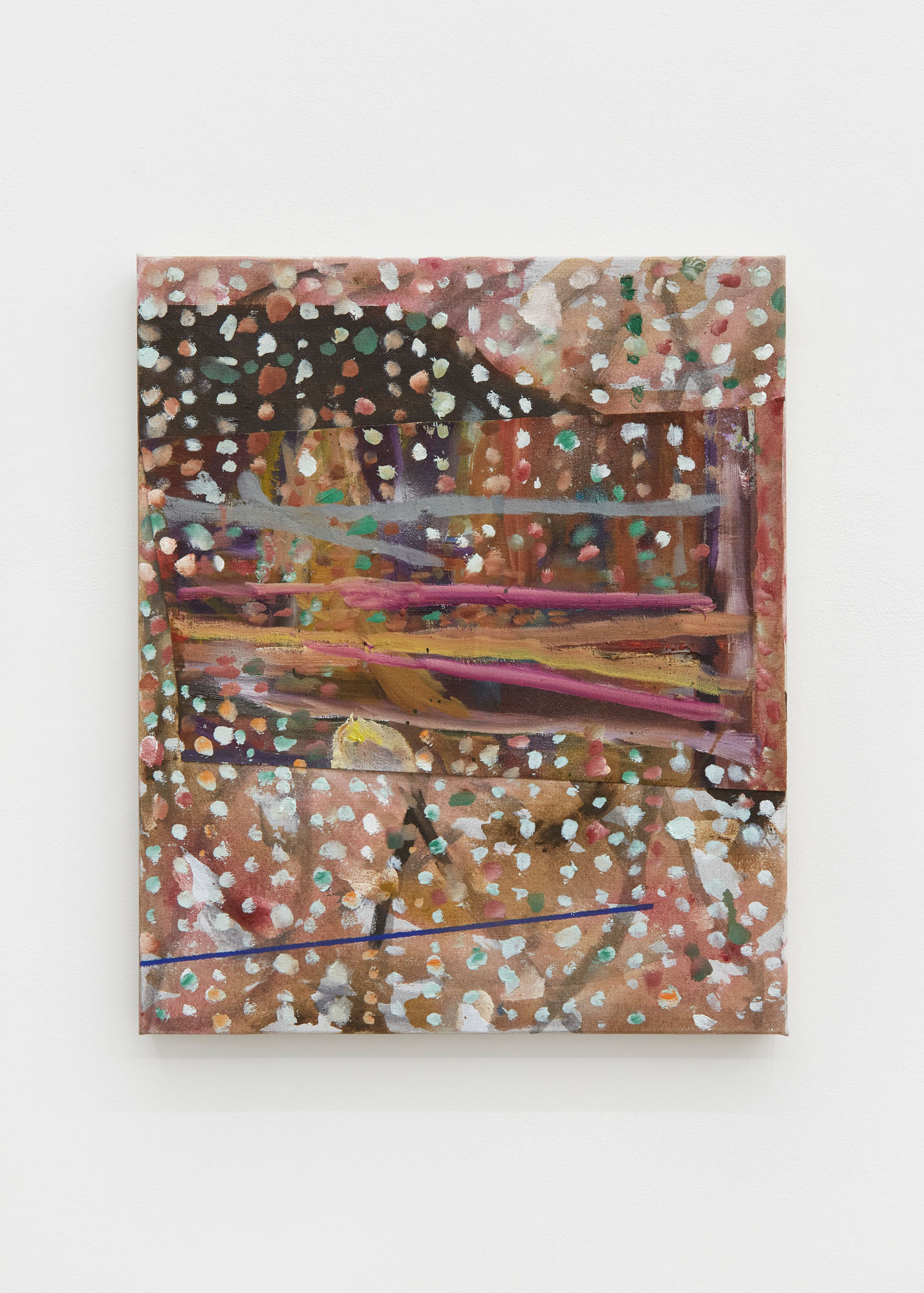








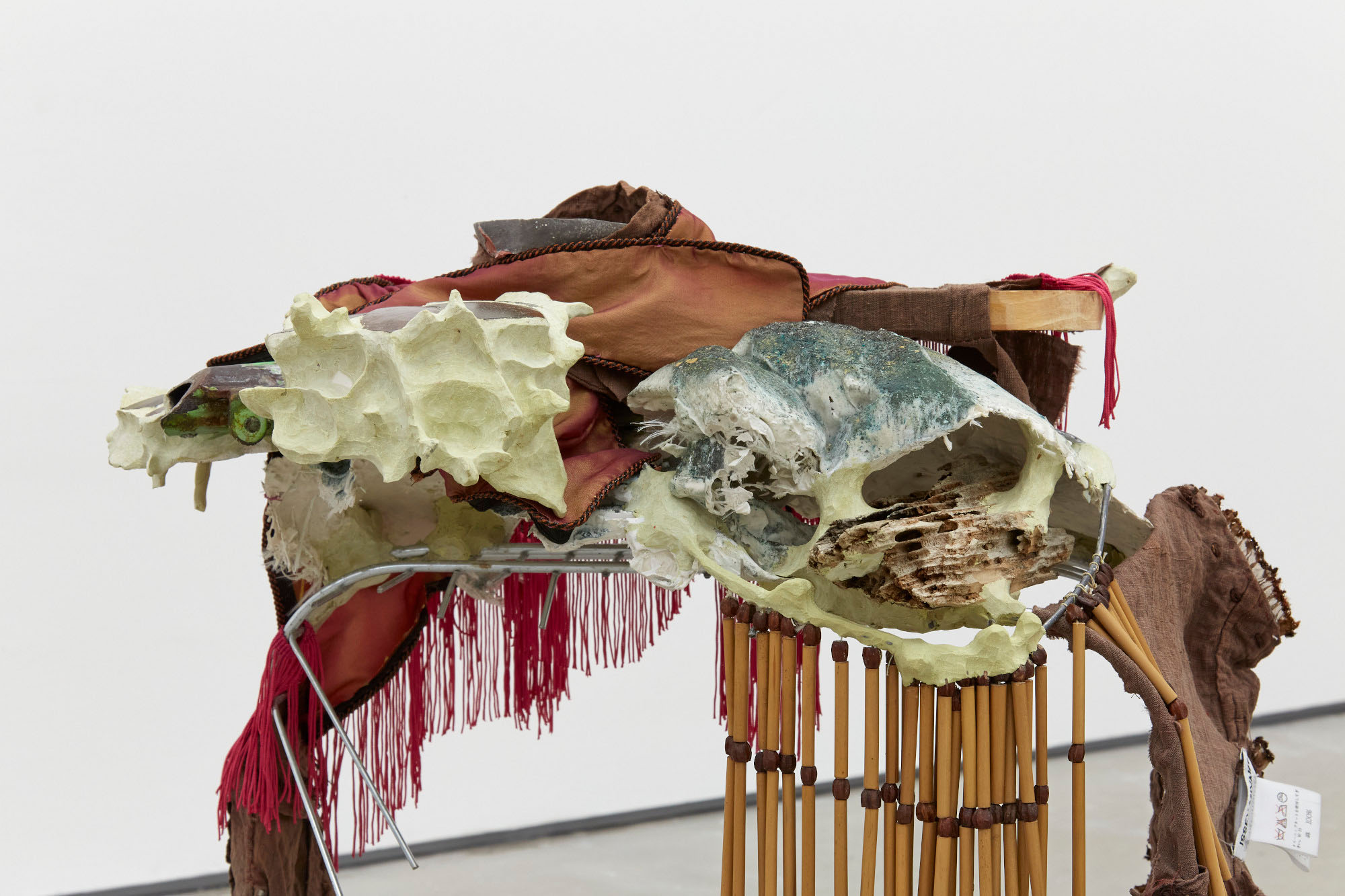




























Previous Articles
OFLUXO is proudly powered by WordPress


